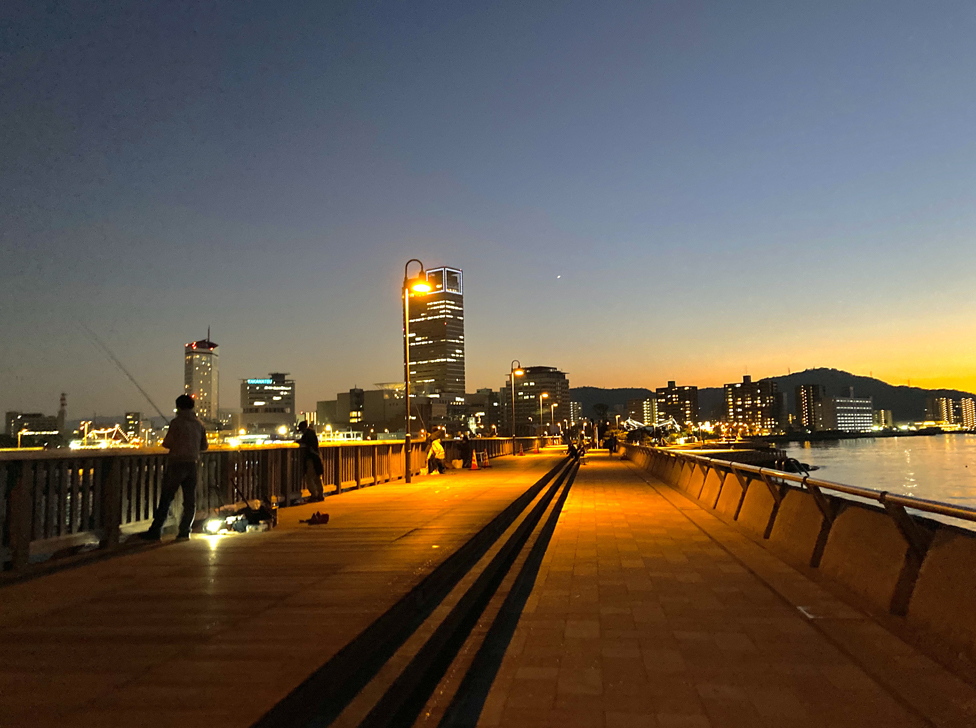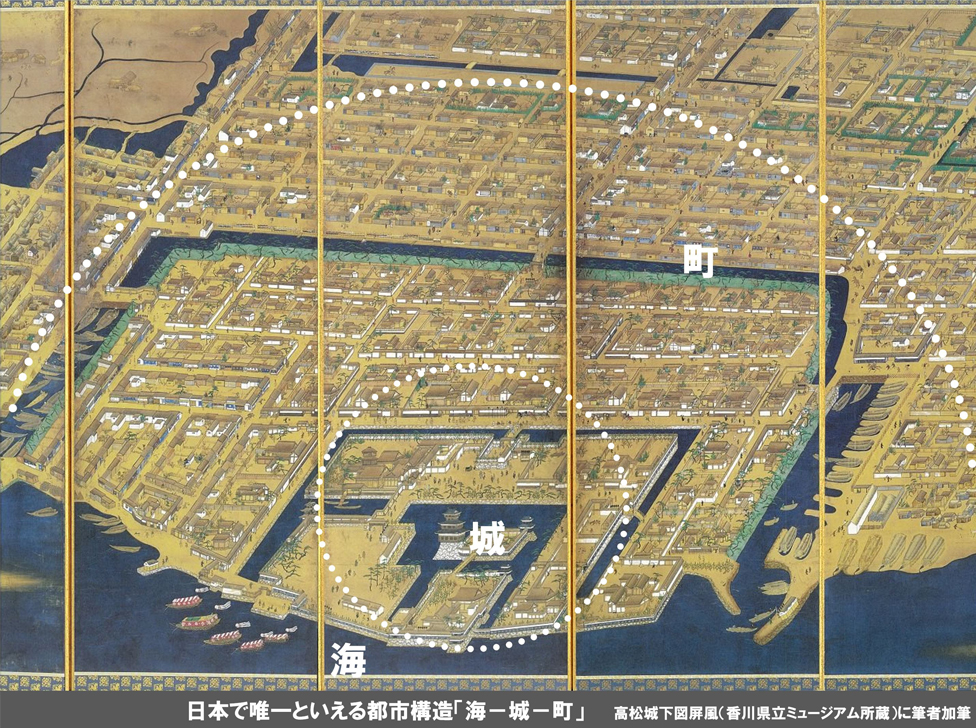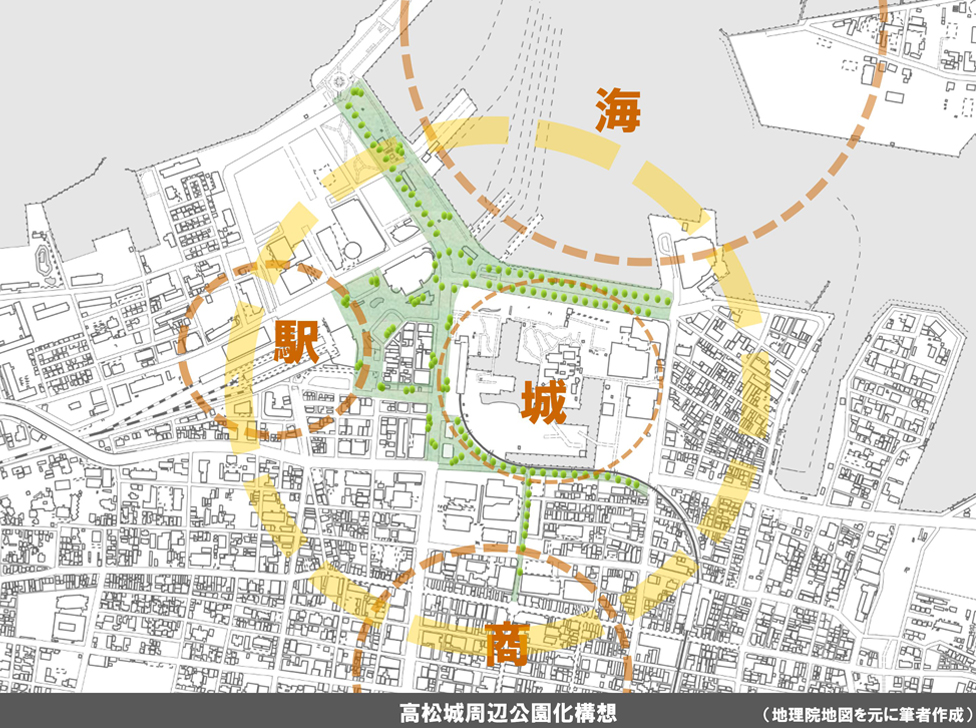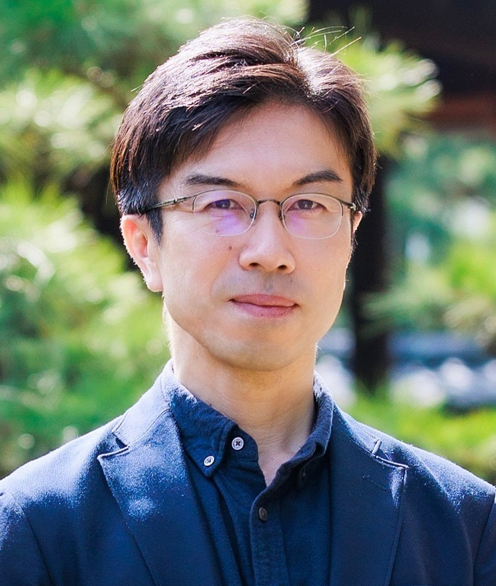Takamatsu, Kagawa—the only seaside castle town in the world
Hello everyone. My name is Norihisa Nishinari and I am from Kagawa University. I have the pleasure to serve as coordinator of the Students’ Summit in Takamatsu, Kagawa—an event related to the G7 Sustainable Urban Development Ministers’ Meeting.
Born and raised in Tokyo, a job opportunity brought me to Kagawa University in 2009. I specialize in urban planning and landscape design, and am currently engaged in research and practice on key themes such as “town planning that leverages history and culture” and “the design and management of public spaces.”
 Takamatsu Port at dusk
Takamatsu Port at dusk
For someone like me who lived in Tokyo for about 30years, I see Takamatsu, Kagawa as a truly ideal place, rich in nature, with delicious food, and blessed by the Seto Inland Sea and the Sanuki Mountains. As a castle town overlooking the sea, the town of Takamatsu —my current home—underwent a formation process that is rare in the history of Japanese castles. It is the only town in Japan, or perhaps the world, that has undergone this characteristic process. Let me explain in just a little more detail.
Takamatsu, Kagawa—the only seaside castle town in the world. What makes it unique? Let me summarize it in the following three points.
(1) Takamatsu had the “first and largest” seaside castle in Japan
(2) The castle faces the sea and there is a well-balanced urban structure with “sea–castle–town” aligned in a straight line
(3) The waters developed by the sea castle during the Edo period are still used as a port today
 Urban structure of the seaside castle town
Urban structure of the seaside castle town
Looking at point (1) first, I think that most locals are unaware that Japan’s first and largest seaside castle was located in Takamatsu, Kagawa. Construction of Takamatsu Castle began in 1588. It was a period when Toyotomi Hideyoshi had seized control over most of the country and “early modern castles,” which integrated castles and castle towns, were being built throughout Japan. Takamatsu Castle was one of these, and it performed a particularly important role in managing traffic and law and order in the Seto Inland Sea. For this reason, the outer moat of Takamatsu Castle also functioned as a massive harbor, and as a result, Japan’s earliest and largest “early modern castle” open to the sea was erected in Takamatsu.
 Concept plan for developing a park
Concept plan for developing a park
around Takamatsu Castle
The second point, as can be seen in the Takamatsu joka-zu byobu (folding screen of the castle town of Takamatsu), the castle adopts an urban structure in which the sea, castle, and town are positioned in a straight line. Such an urban structure produced a dynamic seaside castle landscape with the castle facing the sea and the castle town to the rear. This landscape was so distinctive that it could not be seen in any other seaside castles.
Finally, the third point is that the castle and sea are still close to each other, and the areas of trade developed because of the seaside castle have been carried on to present day Takamatsu. This unique characteristic is not seen in other seaside castles. In most cases, castle ruins were buried under urban areas as land was reclaimed during the modernization process. In the case of Takamatsu, however, a massive harbor was built in front of the seaside castle, which has been actively used since modernization of the town without any land being reclaimed. As a consequence, Takamatsu Castle remains close to the sea, and this proximity is what allows it to demonstrate a strong individuality not found in other towns.
As described in the three characteristics above, Takamatsu, the capital of Kagawa Prefecture, has the unique characteristic of a seaside castle that is not seen in other castle towns. In my view, therefore, we need to fully grasp the individuality that is unique to Takamatsu and develop original attractions and appeal that cannot be experienced in other cities. To this end, a solid “town vision” is needed which capitalizes on our town’s individuality. Specifically, I believe that development of a walkable town—where people can enjoy walking about the “port–train station–castle–shopping district”—will play an important role for Takamatsu going forward.

 Takamatsu Port at dusk
Takamatsu Port at dusk
 Urban structure of the seaside castle town
Urban structure of the seaside castle town
 Concept plan for developing a park
Concept plan for developing a park 

